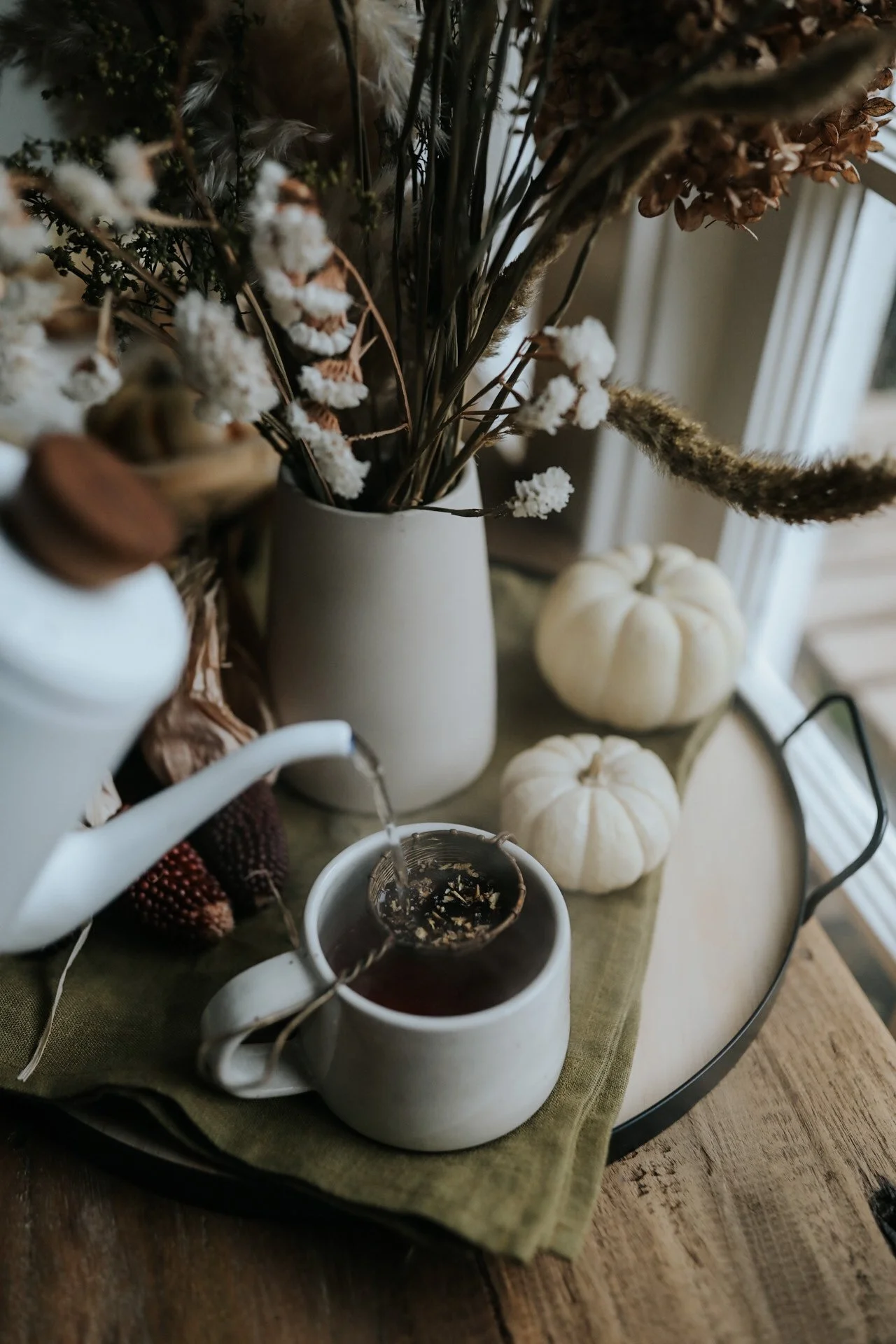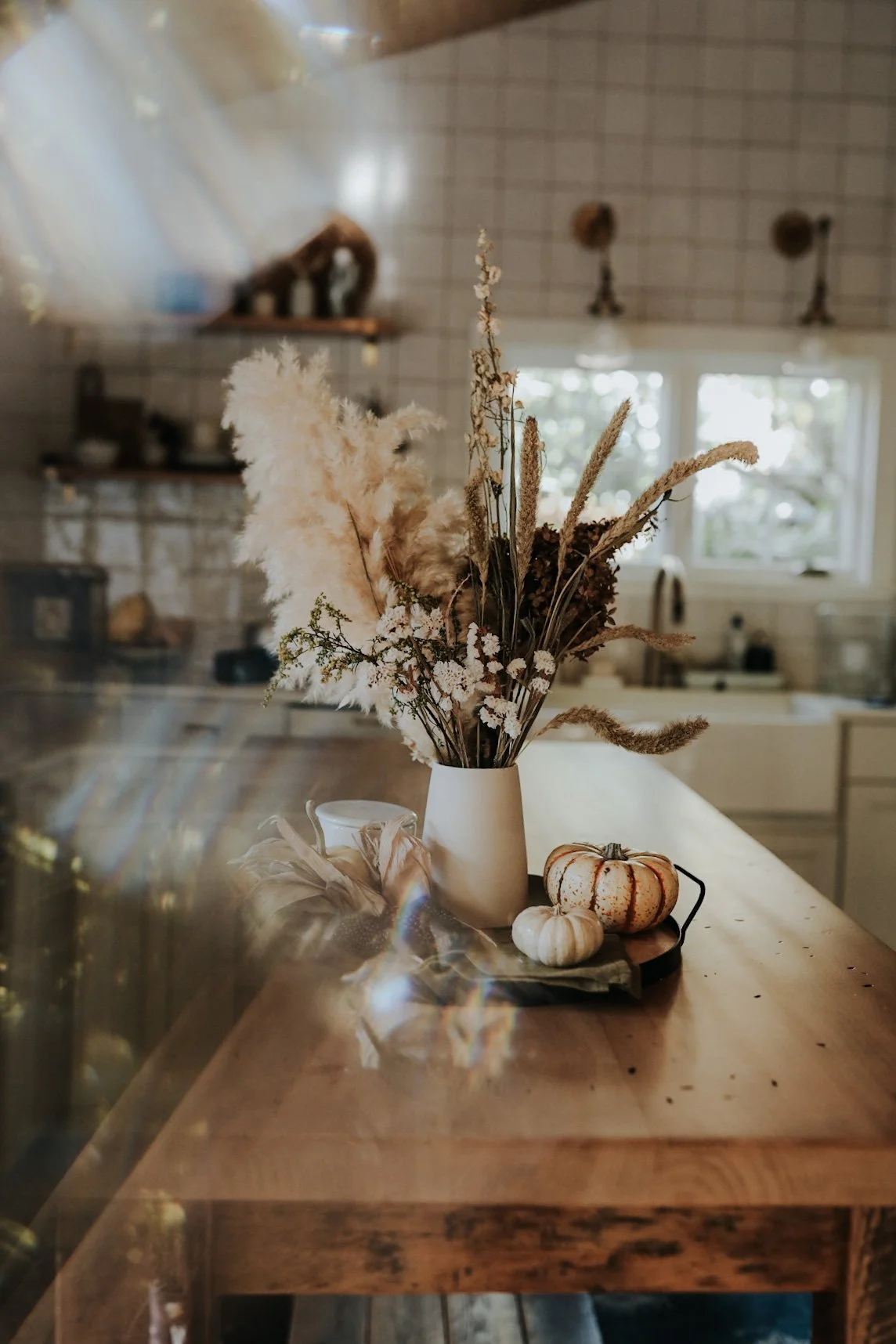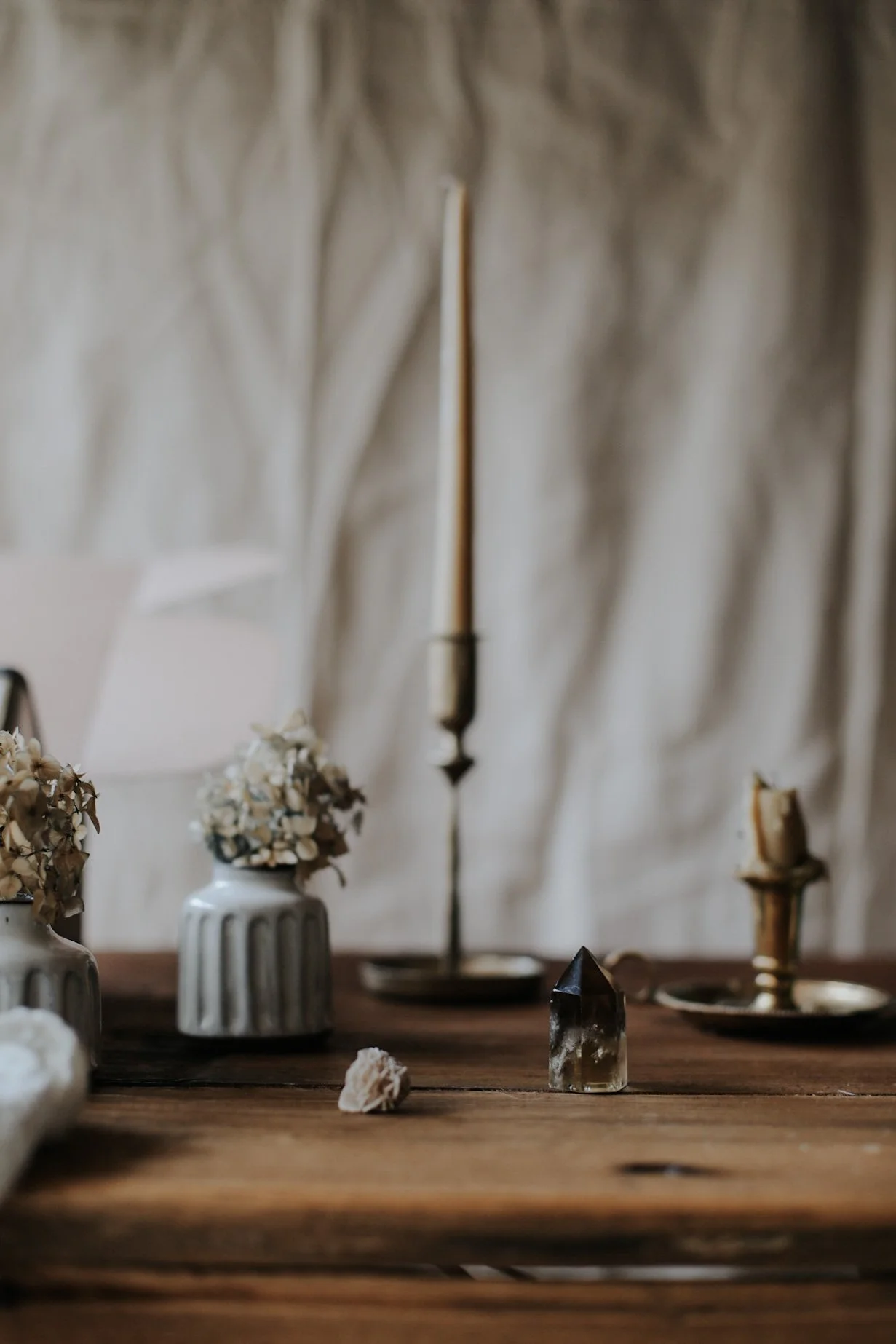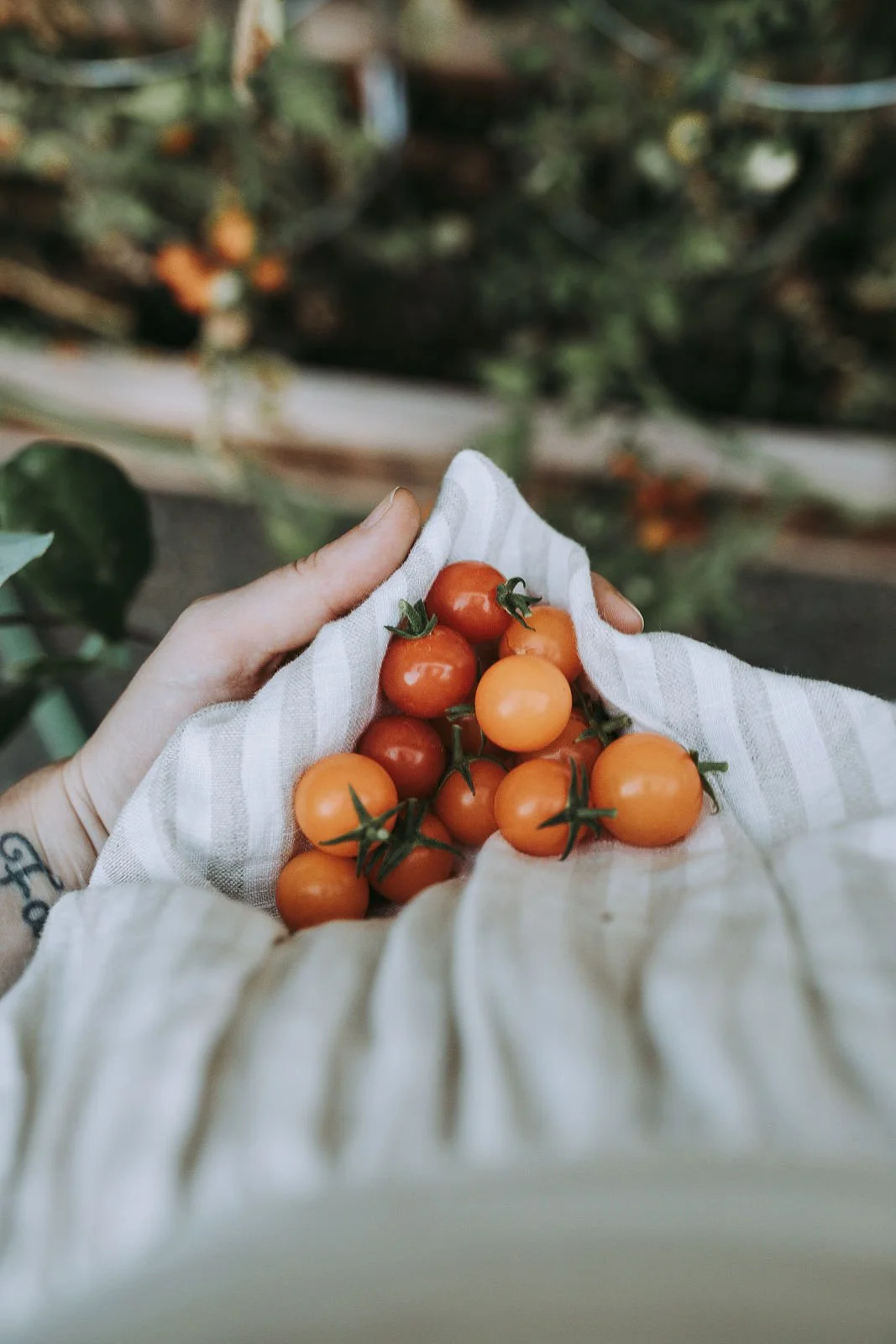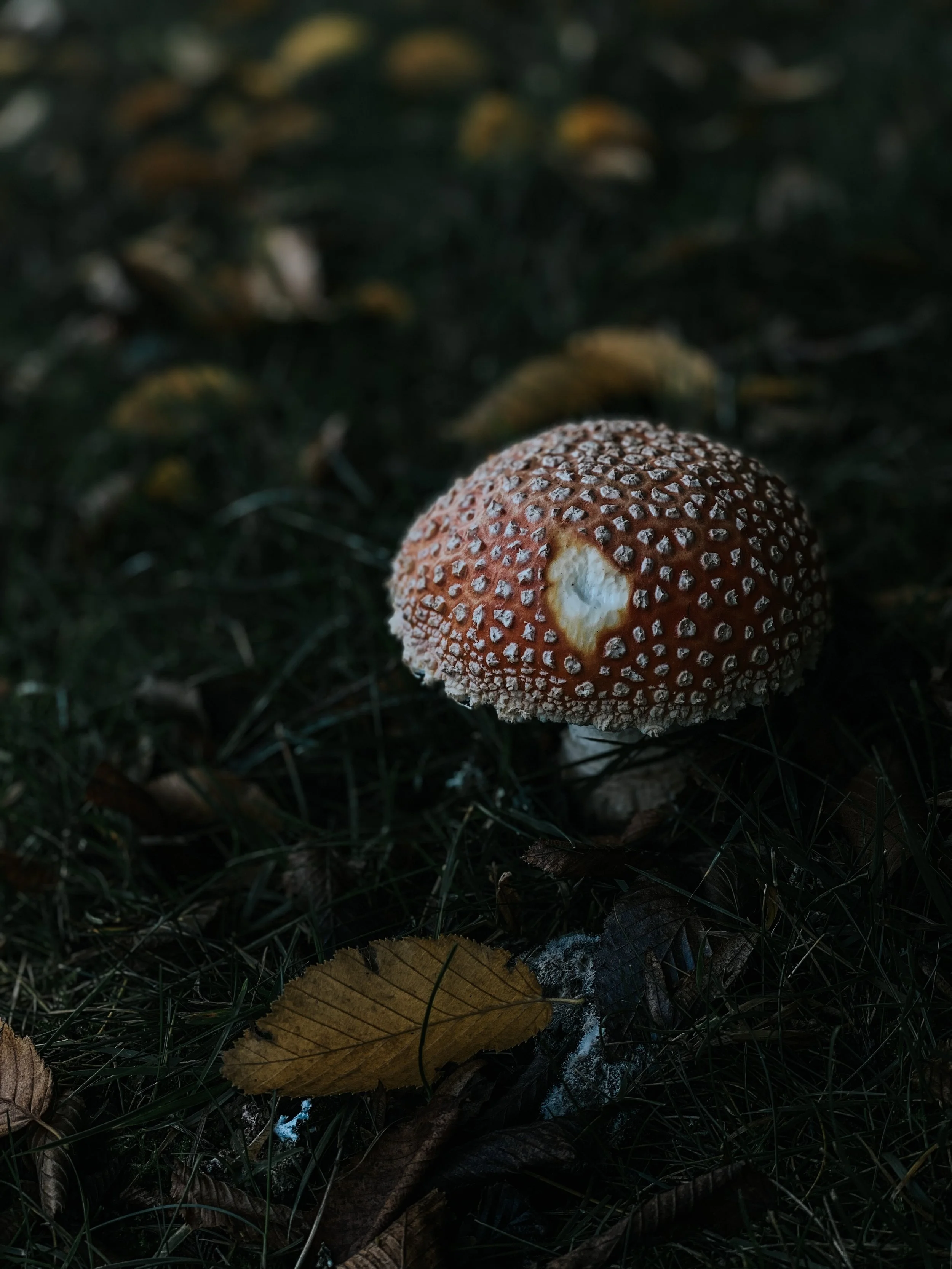The History of Halloween: From Ancient Origins to Cozy Family Traditions
The Evolution of Halloween – From Spooky Origins to Cozy Celebrations
Halloween is a holiday that conjures up images of glowing jack-o'-lanterns, kids trick-or-treating in creative costumes, and spooky stories of haunted houses, witches, and fall festivities. But beneath the playful frights and sweet treats lies a history that stretches back thousands of years, rooted in ancient traditions and seasonal rituals.
While Halloween has evolved into a fun-filled celebration of spooky activities and traditions, it’s also a great time to slow down, enjoy cozy fall moments, and create lasting family memories with loved ones. Whether it's crafting costumes together, curling up for a family movie night, or baking seasonal treats, Halloween can be as cozy as it is exciting.
In this post, we’ll take a journey through the fascinating history of Halloween, explore how it has evolved over time, and end with some ideas on how to celebrate the holiday in a cozy, family-friendly way. Get ready to embrace the spirit of Halloween in all its warmth, wonder, and, yes—just the right amount of spookiness!
Ancient Origins of Halloween: Samhain and the Birth of Spooky Traditions
Long before Halloween as we know it today, ancient cultures across Europe celebrated the changing of the seasons with festivals marking the end of the harvest and the beginning of winter. One of the most significant of these celebrations was Samhain (pronounced “sow-en”), a festival held by the Celts over 2,000 years ago in what is now Ireland, Scotland, and parts of France.
Samhain marked a crucial point in the yearly cycle—a time when the veil between the physical world and the spirit world thinned, leading to ancient traditions that honored the dead and celebrated the fall harvest. As the final harvest was brought in, the Celts believed that spirits of the dead could return to walk among the living. To protect themselves and honor their ancestors, people lit bonfires, wore disguises, and offered food to appease wandering spirits. This marked the beginning of traditions that still echo in our modern Halloween celebrations.
Samhain Rituals: Costumes, Bonfires, and Early Halloween Customs
Many of the early Samhain rituals were about protection and preparation for the darker, colder months ahead. Villagers would don animal skins and masks to confuse and scare away harmful spirits. These early disguises eventually evolved into the playful costumes we wear today.
Additionally, Samhain was a time for divination—a spiritual practice used to predict the future. People would gather around the fire, using the thinning veil between worlds to seek guidance for the coming year. These ancient customs reflected a deep connection to nature, the cycles of life, and the mysteries of the unknown.
The Power of Bonfires
Bonfires were a vital part of Samhain traditions. These blazing fires, often lit on hilltops, symbolized community protection and the cleansing of negative energy, helping villagers prepare for the harsh winter season. People believed that the flames had the power to ward off evil spirits and guide lost souls back to the otherworld. As the night went on, families would take embers from the communal fire back to their homes to relight their hearths, bringing warmth and protection for the winter.
Today, while we may not gather around massive bonfires or use them for spiritual protection, the symbolic power of light during the darker months remains. Whether it’s the flicker of a candle in a jack-o'-lantern or cozying up around a fire, these ancient customs continue to be a comforting part of autumn celebrations.
From Jack-o'-Lanterns to Spirits: The Legend of Stingy Jack and Celtic Symbolism
One of the most iconic symbols of Halloween, the jack-o'-lantern, also has its roots in ancient Celtic traditions. Originally, the Celts carved eerie faces into turnips or potatoes, using them as makeshift lanterns during the dark autumn nights. These glowing symbols were meant to ward off evil spirits, much like today’s modern pumpkin jack-o'-lanterns. These carved vegetables were used as lanterns to light the way on dark nights and to ward off evil spirits, particularly during Samhain when the spirit world was believed to be closer to the living.
The story of the jack-o'-lantern is intertwined with the Irish myth of Stingy Jack, a man who tricked the devil multiple times and, as a result, was denied entry into both heaven and hell. Instead, Jack was cursed to wander the earth for eternity with only a burning coal inside a hollowed-out turnip to light his way. This legend was brought to America by Irish immigrants in the 19th century, where turnips were swapped for the more readily available pumpkins.
Over time, carving pumpkins became a cherished Halloween tradition in the U.S., where the larger, softer pumpkins were easier to carve and more visually striking when lit. Today, the act of carving a jack-o'-lantern has become a fun family activity, symbolizing creativity, protection, and the festive spirit of Halloween. Whether used to scare off spirits or simply to decorate front porches with spooky or silly faces, the glowing jack-o'-lantern remains a quintessential part of Halloween’s autumnal charm.
How Christianity Shaped Halloween: From Samhain to All Hallows' Eve
As Christianity spread through Europe, many ancient pagan festivals and harvest traditions were adapted by the Church, transforming celebrations like Samhain into what we now call All Hallows’ Eve. Around the 8th century, Pope Gregory III declared November 1st as All Saints' Day, also known as All Hallows’ Day, a day to honor saints and martyrs. The evening before, October 31st, became known as All Hallows' Eve, a holy night to prepare for the celebration of the saints.
While the Church aimed to Christianize these celebrations, many of the local customs associated with Samhain persisted, blending with new Christian elements. This fusion of traditions laid the foundation for what would eventually become Halloween.
Honoring the Dead
Just as Samhain was about connecting with the dead, All Souls' Day on November 2nd followed All Saints’ Day and provided a time for Christians to pray for the souls of the deceased, especially those still in purgatory. This emphasis on honoring the dead reinforced the original Samhain beliefs about the thinning of the veil between the living and the spirit world.
During this time, many people would light candles on graves or hold feasts to honor their ancestors, continuing the tradition of making offerings to the spirits. This practice can still be seen today in modern Halloween customs, like lighting candles in pumpkins or creating altars for loved ones.
Soul Cakes and Guising
A key tradition during All Hallows' Eve was the offering of soul cakes, small round cakes made for the souls of the dead. Children and poor people would go door-to-door, offering prayers for the souls of the deceased in exchange for these cakes. This practice, known as souling, was an early precursor to trick-or-treating.
In addition to souling, people dressed in disguises or costumes—called guising—to ward off malevolent spirits or impersonate them. By dressing up, they hoped to confuse any wandering spirits, protecting themselves from harm. These practices of guising and collecting treats evolved over time, eventually becoming the trick-or-treat tradition we know today.
Samhain’s Legacy in Halloween
Though Samhain was transformed into a Christian celebration, many of its key elements remained. The bonfires, costumes, and focus on the dead became intertwined with Christian practices, creating a holiday that was both sacred and playful. Over time, these traditions spread beyond Europe, making their way to the New World, where they would evolve even further.
The blending of Samhain and Christian influences helped shape Halloween into a celebration that honors the past while also embracing the present. Today, while we may not associate Halloween with its Christian roots as strongly, its connection to the spiritual and the supernatural remains central to the holiday.
Halloween in Early America: How Immigrants Shaped the Holiday
Halloween’s journey to America came primarily through Irish and Scottish immigrants in the 19th century. They brought with them their beloved customs of Samhain and All Hallows' Eve, including traditions like guising (dressing up in costumes) and carving turnips to ward off spirits. But in the New World, these traditions transformed, blending with the diverse cultural influences of early America.
The Influence of Irish Immigration
The Irish Potato Famine in the mid-1800s led to a large wave of Irish immigrants to the United States, bringing with them their Halloween customs. It was in America that the tradition of carving jack-o'-lanterns shifted from turnips to pumpkins, a fruit native to North America and much easier to carve. These glowing pumpkin faces soon became a Halloween staple, a beacon of the holiday’s spirit in front yards across the country.
Mischief Night
In the early days of Halloween in America, it was largely celebrated by young people and became known as a night of mischief and pranks. Mischief Night, as it came to be called, saw boys playing tricks on their neighbors—often involving harmless pranks, but occasionally escalating into vandalism. The tradition of trick-or-treating wasn’t widespread at this point, and the holiday was more about mischief than the fun and candy-filled festivities we know today.
As Halloween grew in popularity, communities sought ways to redirect the mischief into more family-friendly activities. This shift helped transform Halloween from a night of tricks into a celebration of treats and communal gatherings.
Community-Based Celebrations
By the late 1800s, Halloween in America had evolved into a community-centered celebration, emphasizing family-friendly harvest festivals and autumn gatherings where families could enjoy seasonal activities together. Parties became a central way to celebrate Halloween, with activities like bobbing for apples, telling ghost stories, and playing fortune-telling games. The focus was on bringing people together to celebrate the season rather than on individual acts of mischief.
These harvest festivals incorporated elements of both Halloween and traditional autumn celebrations, such as gathering the last of the season’s crops and enjoying seasonal foods like apples, pumpkins, and corn. Families decorated their homes with autumn leaves, gourds, and cornstalks—adding to the warm and festive atmosphere that we still associate with Halloween today.
The Rise of Trick-or-Treating: From Mischief to Family Fun
The tradition of trick-or-treating as we know it today didn’t emerge until the early 20th century. Communities across the United States began organizing activities for children, encouraging them to dress up in costumes and visit neighbors’ houses for treats. This practice was inspired by the earlier customs of souling and guising from Europe, with the playful twist of offering candy instead of soul cakes.
By the 1930s and 1940s, trick-or-treating had become a popular tradition, providing a safe and fun way for families to celebrate Halloween together. The act of going door-to-door in costume for candy solidified Halloween’s place as a beloved holiday for children.
The Modern Evolution of Halloween: From Spooky Nights to Family-Friendly Traditions
By the mid-20th century, Halloween had fully evolved into the fun, family-friendly celebration we know today—filled with costumes, candy, and festive community activities. While its roots in Samhain and All Hallows' Eve were still there, the holiday became less about warding off spirits and more about creating fun experiences for families, especially children. However, the spooky elements remained, making Halloween a unique blend of thrills and coziness.
The Rise of Commercial Halloween
The commercialization of Halloween took off in the early 20th century, as retailers and companies began to see the holiday’s potential for themed products. By the 1950s, the sale of Halloween costumes, decorations, and candy had become big business. Costume manufacturers shifted from handmade, homemade outfits to mass-produced costumes, making it easier for everyone to join in the fun. Children dressed as ghosts, witches, and classic movie monsters like Frankenstein and Dracula, while adults embraced the playful spirit with their own costumes.
Candy companies also jumped on the trend. In the 1920s and 1930s, it was common for kids to receive homemade treats or coins when trick-or-treating. But as commercial candy became more accessible, giving out individually wrapped sweets became the norm. By the 1950s, candy had taken over as the treat of choice, cementing Halloween’s reputation as the ultimate night for sweet tooths everywhere.
Pop Culture and Halloween: How Movies and TV Shaped Today’s Celebrations
Halloween’s spooky side continued to be fueled by pop culture, especially with the rise of horror films in the mid-20th century. Movies like Frankenstein (1931), Dracula (1931), and later Halloween (1978) tapped into people’s love of the eerie, and Halloween became the perfect night to celebrate this fascination with the macabre. Haunted houses, horror movie marathons, and ghost tours became popular activities, adding a thrilling edge to the holiday’s festivities.
Television shows and commercials also contributed to Halloween’s modern appeal. Charlie Brown's Halloween special introduced the iconic phrase, "I got a rock," and solidified the pumpkin patch as a nostalgic Halloween symbol for generations of children.
Creating Cozy Family Halloween Traditions: Decorations, Treats, and Activities
Although Halloween has its spooky side, it has also embraced a more family-friendly and cozy atmosphere over the years. As communities looked to make the holiday safer and more inclusive, family Halloween parties became a popular alternative to traditional trick-or-treating, especially in areas where safety was a concern. Families began decorating their homes with pumpkins, scarecrows, and festive lights, turning the holiday into an opportunity to celebrate the season together.
Today, Halloween is as much about creating warm, fun memories with family as it is about spooky thrills. It’s a time for cozy fall traditions like carving pumpkins, making homemade costumes, and sharing stories around the fire. Many families also participate in neighborhood trunk-or-treat events, where kids can safely collect candy from decorated car trunks in community spaces.
Halloween Today: A Blend of Old and New
Halloween now strikes a balance between the old and the new, the spooky and the sweet. While it retains its roots in the supernatural, the holiday has become more about community, fun, and embracing the joys of autumn. For many, it’s the perfect excuse to slow down, enjoy the season, and create lasting memories with loved ones.
Whether you’re dressing up for a Halloween party, trick-or-treating with kids, or simply enjoying the cozy ambiance of the season, Halloween continues to be a celebration that brings people together in fun and festive ways.
Making Halloween Cozy and Family-Friendly: A Celebration for All Ages
While Halloween has its spooky elements, it can also be a holiday that fosters warmth, togetherness, and creativity. It’s a time to embrace the changing season, enjoy simple traditions, and create cozy moments with loved ones. Whether you're looking for ways to make Halloween more enjoyable for younger children or want to focus on the cozy aspects of the holiday, there are plenty of family-friendly traditions that can turn Halloween into a warm, inviting celebration.
Cozy Halloween Decorations
Set the tone for a cozy family Halloween by decorating your home with warm, inviting autumnal touches that bring the spirit of the season alive. Focus on fall-themed decorations like:
Pumpkins and Gourds: Arrange pumpkins of various sizes on your porch, window sills, or tabletops. You can carve a few into jack-o’-lanterns for that classic Halloween glow, but leaving some uncarved adds a simple, rustic touch.
Candles and Lanterns: Use flickering candles or battery-operated lanterns to create soft, ambient lighting. Scatter them throughout your home or on your porch to welcome trick-or-treaters.
Cozy Textiles: Bring out the warm blankets, plush pillows, and soft throws in rich autumn colors like burnt orange, deep reds, and warm browns. Create a cozy nook or "book corner" for your family to relax and enjoy Halloween stories.
Nature-Inspired Elements: Incorporate fallen leaves, acorns, pine cones, and cornstalks into your decor. These natural elements not only look beautiful but also connect your home to the autumn season.
Family-Friendly Halloween Activities: Crafts, Stories, and Homemade Costumes
Make Halloween an opportunity to spend quality time together with activities that everyone can enjoy. Some ideas include:
Pumpkin Carving or Painting: Gather the family for a pumpkin-carving session. Younger kids who aren’t ready for carving can paint their pumpkins with fun designs or use stickers to decorate. You can also toast the pumpkin seeds for a cozy snack afterward!
Homemade Costumes: Instead of buying pre-made costumes, get creative and make your own. Work together as a family to design and create unique costumes that reflect each person’s favorite characters or interests.
Family-Friendly Ghost Stories: On Halloween night, gather around the fireplace or a cozy blanket fort and tell lighthearted ghost stories. Keep the mood fun and not too scary for younger children, focusing on whimsical tales of friendly ghosts or funny Halloween mishaps.
Cozy Halloween Treats and Snacks: Delicious Ideas for the Whole Family
Warm up your cozy Halloween evening with delicious fall treats and comforting snacks that the whole family will love, perfect for enjoying after trick-or-treating or during a family movie marathon:
Warm Apple Cider: Brew a big pot of spiced apple cider, perfect for sipping while watching Halloween movies or handing out candy. You can add cinnamon sticks and cloves for extra warmth and flavor.
Pumpkin-Themed Baked Goods: Bake some simple pumpkin-themed treats, like pumpkin muffins, spiced pumpkin bread, or pumpkin-shaped sugar cookies. Involve the kids by letting them decorate the cookies with orange frosting and candy eyes.
DIY Candy Bar: Set up a cozy DIY candy bar with an assortment of Halloween-themed treats. Let each family member pick out their favorites to enjoy during a movie marathon or as a sweet reward after trick-or-treating.
Meaningful Halloween Traditions: Making Memories with Loved Ones
In addition to the fun, Halloween can also be a time to start meaningful traditions that your family will look forward to year after year. Some ideas include:
A Halloween Memory Book: Start a family tradition of documenting each Halloween by taking photos of costumes, decorated pumpkins, and special activities. Create a scrapbook or digital album to look back on every year.
Gratitude and Reflection: Take a moment during Halloween to reflect on the season and express gratitude for the year. This can be as simple as gathering around the table to share what each person is thankful for as you enjoy a cozy dinner together.
Storytelling Traditions: Embrace the quieter, cozier side of Halloween by bringing back the old tradition of storytelling. Whether it’s sharing favorite spooky tales, reading classic Halloween books, or even making up your own, it’s a wonderful way to end the evening with loved ones.
Mindful Halloween: Embracing the Seasonal Spirit with Simple Traditions
Halloween is the perfect opportunity to connect with the rhythms of nature and the changing season. Instead of focusing solely on the spooky aspects, take time to embrace the autumnal atmosphere by:
Going on a Fall Nature Walk: Collect fallen leaves, acorns, or pine cones to use in Halloween crafts or simply to appreciate the beauty of the season.
Creating a Cozy Evening at Home: After trick-or-treating, wind down with a family movie night. Choose a mix of family-friendly Halloween films like "Hocus Pocus," "The Addams Family," or even a fall classic like "It’s the Great Pumpkin, Charlie Brown."
Pin for Later!
Celebrate Halloween with Cozy, Fun, and Family-Friendly Traditions
Halloween is a holiday steeped in history, from the ancient festival of Samhain to the fun-filled family celebration it has become today. Over time, Halloween has transformed from a night of warding off spirits to a celebration that brings communities and families together. The costumes, jack-o'-lanterns, and sweet treats are not just traditions but opportunities to connect, share, and make lasting memories with those we love.
By embracing the cozier, family-friendly side of Halloween, you can create a holiday that is both meaningful and fun. Whether it’s through cozy decorations, creative activities, or delicious autumn treats, there are countless ways to turn Halloween into a celebration of warmth and togetherness.
As you prepare for this Halloween, remember to slow down, enjoy the little moments, and make space for the joys of the season. With a bit of creativity and mindfulness, Halloween can be as cozy as any other holiday, filled with laughter, light, and a sprinkle of spooky magic.
Happy Halloween!
Sarah Voiles
Shop the Store:
FAQs
What is the history of Halloween?
Answer: Halloween originated from the ancient Celtic festival of Samhain, celebrated over 2,000 years ago. It marked the end of the harvest and the beginning of winter, a time when people believed the boundary between the living and the dead was thinnest. The tradition evolved through Christian influence into All Hallows' Eve, and eventually, the modern Halloween we celebrate today.
How did Halloween evolve from spooky to family-friendly?
Answer: Originally focused on warding off spirits, Halloween became more community-centered when it reached America in the 19th century. By the mid-20th century, it evolved into a family-friendly holiday with traditions like trick-or-treating, costume parties, and pumpkin carving, making it fun for all ages.
Why do we carve pumpkins on Halloween?
Answer: The tradition of carving pumpkins comes from an Irish legend about Stingy Jack. Originally, turnips were carved to ward off spirits, but when Irish immigrants brought the tradition to America, pumpkins—native to the region—became the preferred choice due to their size and ease of carving.
What is the origin of trick-or-treating?
Answer: Trick-or-treating has roots in medieval Europe, where children and poor people would go "souling," offering prayers for the dead in exchange for food. This tradition evolved into going door-to-door in costume, asking for treats, and has been a popular Halloween activity since the early 20th century in America.
How can I make Halloween cozy and family-friendly?
Answer: To create a cozy Halloween, focus on family activities like carving pumpkins, baking fall treats, watching Halloween movies, or telling ghost stories by candlelight. Incorporate warm, autumnal decorations and enjoy seasonal traditions that bring the whole family together.
What are some family-friendly Halloween movies?
Answer: Great family-friendly Halloween movies include "Hocus Pocus," "The Addams Family," "It’s the Great Pumpkin, Charlie Brown," and "Casper." These films strike a balance between spooky and fun, making them perfect for all ages.

















